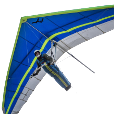AutoCAD, hah! In my day you drew up your plans on a big adjustable table with big adjustable pencils. If you wanted to communicate with your client, you cranked out an actual letter on actual paper with a manual typewriter. Then you put it in an envelope, seeded your fields, punched out a nazi, walked to the post office, mailed your letter, walked home, punched out a commie, and harvested your fields. None of your new-fangled telephones or electricity or flivvers, neither! You did math in your head or it didn't get done. Machines are for sissies!
